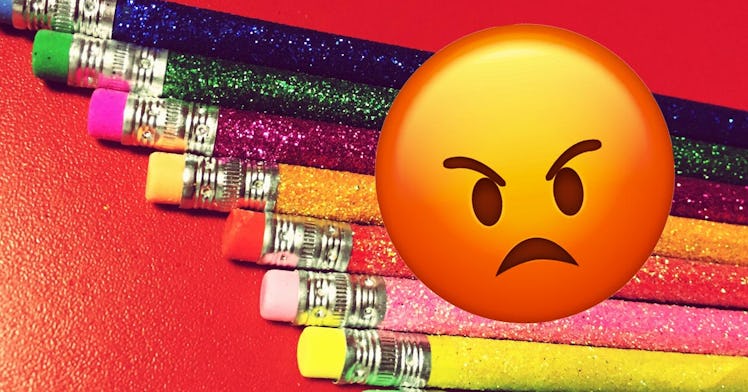Can Schools Stop Giving Kids So Much Crap?
My kids come home with stickers, pencils, stamps, balloons, and other such crap for good grades or good behavior. Positive reinforcement is great. This isn't.

As one of my daughters would arrive home from school, my heart would swell with pride and joy as she babbled excitedly on about a great test grade, behavioral report, or when she was ‘Caught Being Good’. But that swell dropped into a repulsive flush as she inevitably added, “And so, I got this!” She then would then pull from her backpack another machine-molded treat, another cheap plastic toy, another pencil and/or eraser, another stack of stickers, another balloon, another piece of crap.
Kids’ lives these days are filled with crap. They get ‘gift bags’ filled with plastic from each and every birthday party. They get stickers at the grocery store. They get lollipops at the bank. They get treats walking down the street. It’s a constant stream of fattening, enamel-rotting, distracting crap. And when one of the crap tributaries is their school, it really sets me off.
Schools should be a bastion of positive reinforcement. But, I don’t see it as a positive if our children are taught that their good school work also comes with a physical reward. After all, part of the whole point of school is to go there and learn how to get good grades and behave within a public environment.
This sort of institutional bribery sets our children up for failure because it does not help them learn respect and responsibility. To the contrary, it instills in our children an even deeper sense of entitlement, rather than one of determined achievement.
And yet, a 2013 Bridging the Gap study found that 69 percent of U.S. elementary schools allow candy to be used in lessons and 65 percent of them allow candy to be used as reward.
Realize too: those statistics are just for candy. How many more schools out there instead (or also) distribute scads of stickers, pencils, toys, and erasers? Not only do these physical rewards give our kids the wrong message about their motivations to do well, they pile up at home. I routinely cleaned out drawers, bins, car arm rests, and backpacks that were getting inundated with these trinkets.
I shuddered and ranted and railed about this deluge of trinkets – a seemingly lone voice in the wind. And yet my biggest frustration came from perhaps the most benign two items of them all: The noble pencil and his buddy the eraser.
Now, I love a good pencil. As a kid I drew incessantly and loved the soft shading the pencil’s graphite allowed. I still use pencils for notes now because I like the feel of them. They’re more environmentally friendly than pens. They’re sort of noble, and nostalgic, and authentic all at once.
But my daughter’s bribe pencils piled up like a log jam in a Yukon river. Worse still, pencils are now often wrapped in plastic sleeves slathered with graphics of holidays, seasons, or characters. And there was an incessant march of ‘erasers’, which are now molded into so many wild and fantastic shapes that they are effectively more toy than tool.
So, what’s the problem with a kid getting pencils and erasers? It’s simple: they don’t use them. Kids in this digital age often (certainly too often) draw, write, and doodle using devices. These useless pencils and erasers pile up, never once sharpened or rubbed across a page, a mute testimony to an educational culture so bent on physical rewards that they fool themselves into thinking these historic implements will actually help the child.
Our kids’ care-givers, parents, and teachers alike, must steer away from these physical gratifications and reward our children’s achievements in more positive and constructive ways.
The University of Minnesota’s College of Education and Human Development suggests the continued use of tried and true ‘social reinforcers,’ the traditional expressions of approval and praise such as “I can tell you are working really hard”, a simple “Super!” written on a paper, and physical expressions of approval (smiling, clapping, a pat on the back, etc.). They also suggest ‘activity reinforcers,’ where students are rewarded with opportunities to engage in preferred activities, such as playing a game, getting computer time, or reading on their own (or, better still, with a friend).
If more adults could implement these positive, intangible reinforcements, it would help us all to raise better, healthier children – as well as prevent further groans of pain when we have to scoop more plastic gift detritus, including the occasional pencil, from another backpack.
This article was originally published on